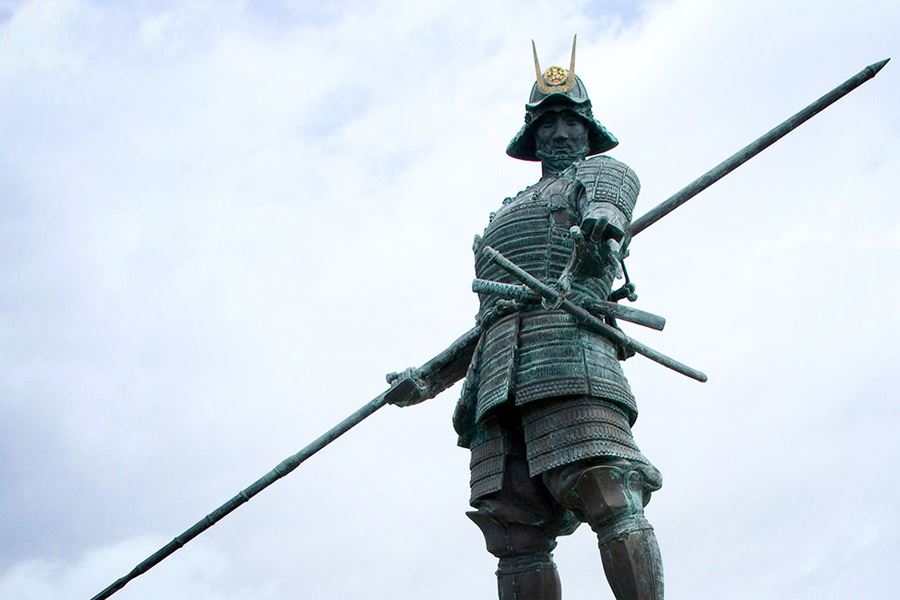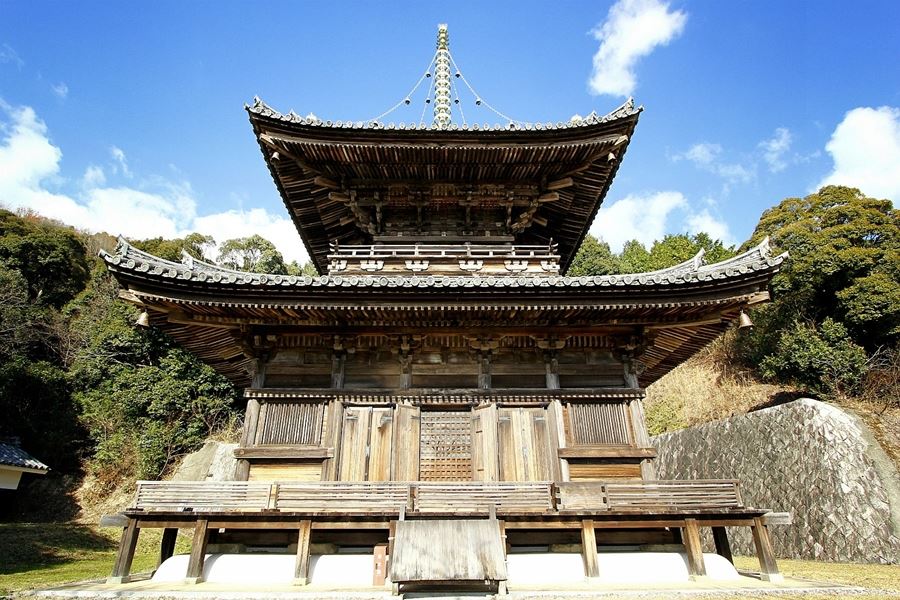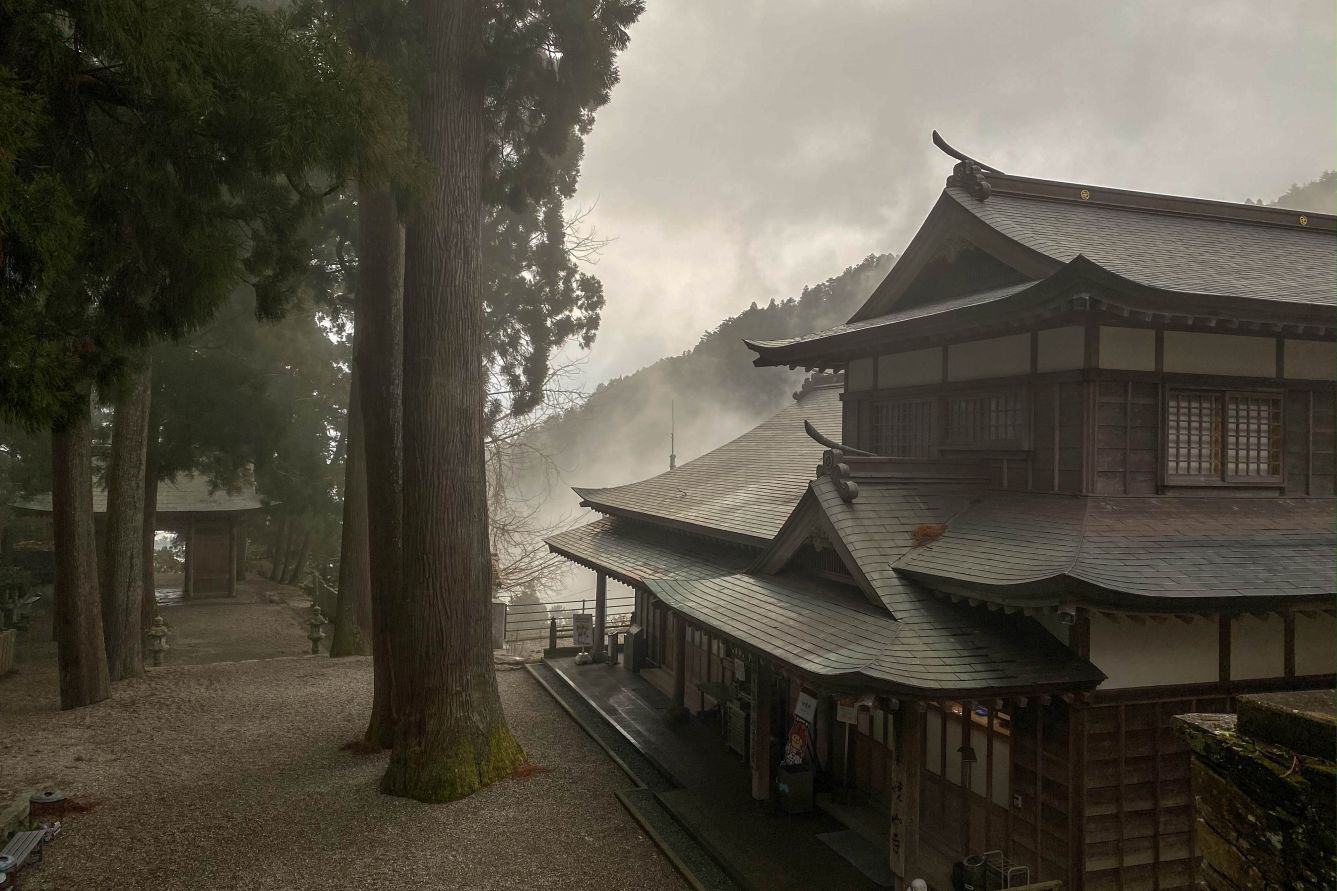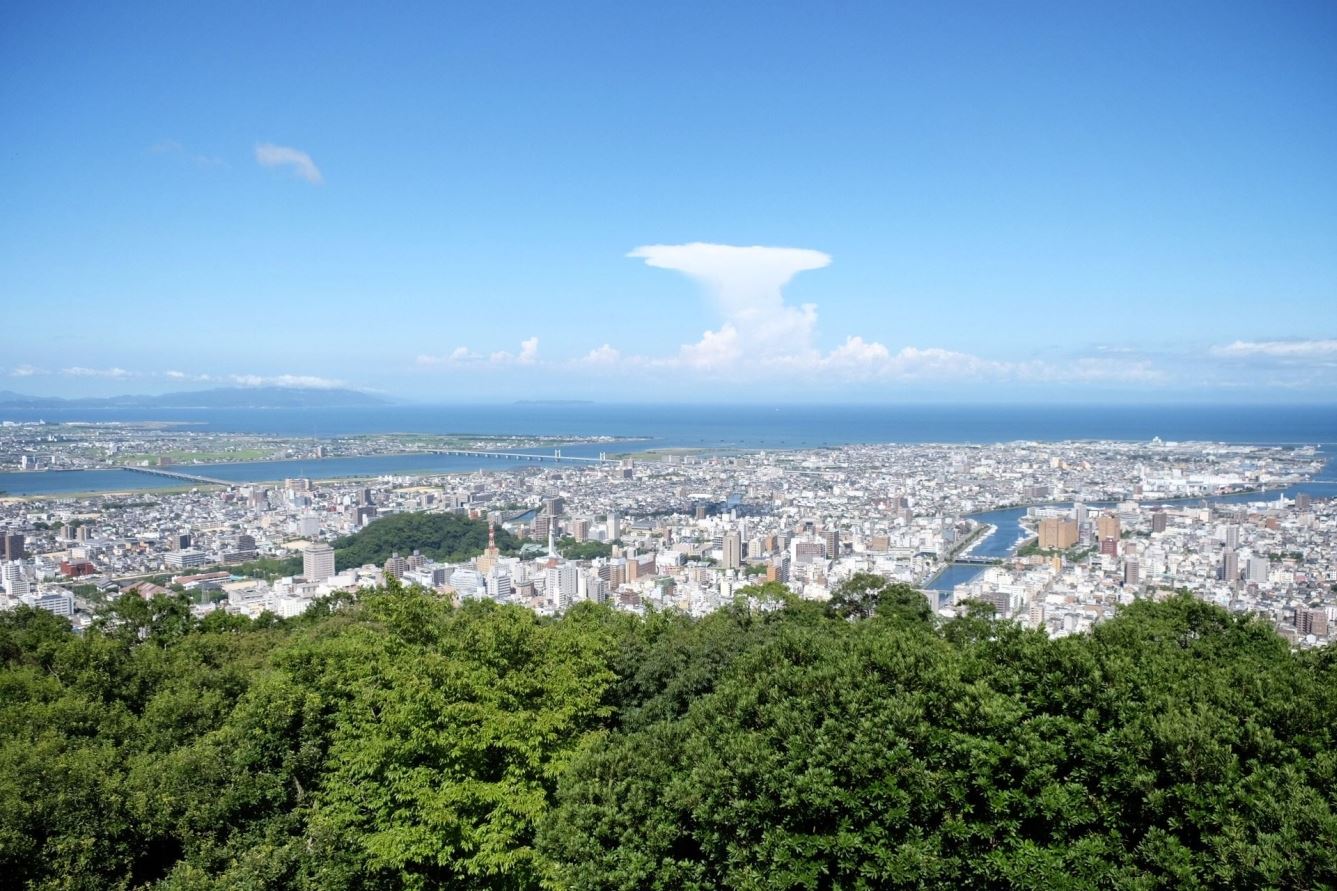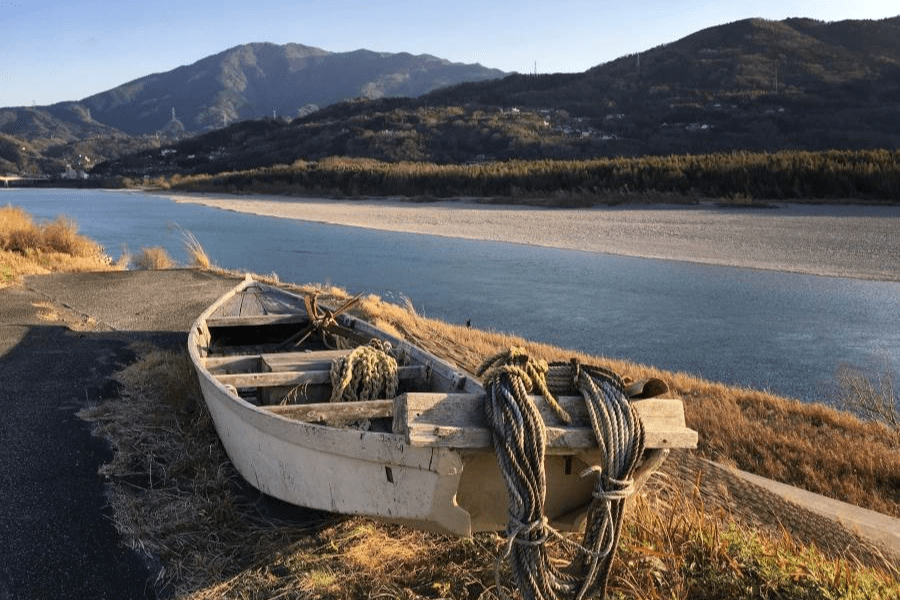Temple 11, Fujii-dera
Home » Temple 11, Fujii-dera
Temple 11, Fujii-dera
Fujii-dera is Temple 11 on the Shikoku pilgrimage, or Henro. It stands in a side valley off the Yoshino River rift valley. It takes its name from the wisteria that grows there. Of the 88 sacred sites in Shikoku, it’s the only one where the character for ‘temple’ is read “dera” instead of “ji”.
What to see
Several steps lead up to a very plain Niō gate, with a belfry on a stone platform to the right. Passing through the gate, in front of you is a slope with wisteria, said to have been planted by Kūkai. One assumes that he wasn’t responsible for the metal frames on which the wisteria grow. The five-coloured wisteria blooms from late April to early May.
The main hall is small but the roof is encrusted in elaborate tiles giving it an impressive appearance. Inside, you can see the principle image in the centre. A celestial dragon, painted by a local artist in 1977, graces the ceiling. Unless you crane your neck up above the offertory box, you could miss seeing the dragon. A bronze statue of Kūkai stands to the left of the hall. The temple office is opposite the water basin.
In addition to the Daishi Hall, there’s a Fudō Hall, and an octagonal White Dragon Benzaiten Hall.
To the left of the main hall, two paths lead off. These paths form a loop, passing through a remarkable landscape including a stream with waterfalls, dry stone walls, and a mini-pilgrimage, with 88 concrete templets with relevant images. There’s also an Okunoin, a very small concrete shrine The Henro path to Temple 12, Shōsan-ji passes through this mini-pilgrimage. It’s about 13 km on a narrow and rugged mountain road, known as one of the ‘difficult places’ on the pilgrimage. Along this path, you can see the stone on which Kūkai conducted a Goma ritual lasting seventeen days.
History
In 815 Kūkai visited the area and built a temple to house a statue of Yakushi Nyorai. The temple developed into a major centre for Shingon esoteric Buddhism, with a great number of buildings. All of these were burnt down by Chōsokabe Motochika’s forces, although the principle image survived. A visitor in 1653 described a state of devastation, with Buddha statues piled up in the corner of a decaying hall. But in 1674, it was revived by a Zen master of the Rinzai sect. In 1832, a fire destroyed everything but the principle image, and the current buildings were finished in 1860.
Legends
Kūkai prayed here to ward off personal misfortune and for the well-being of sentient beings. At that time, Kūkai was 42, an age at which crises are particularly likely to occur. He performed a Goma ritual on a rock for seventeen days to mark the founding of the temple. He also planted a wisteria in front of the temple, whereafter it was named after the flower.
Having survived two major burnings, the principle image is considered a talisman against disasters.
Today, Fujii-dera is one of only three Zen temples on the pilgrimage. The other two are Temple 33 Sekkei-ji and Temple 15 Awa Kokubun-ji.
Information
Name in Japanese: 藤井寺
Pronunciation: fujii-dera
Address: 1525 Inoo, Kamojimacho, Yoshinogawa, Tokushima 776-0033
Related Tours
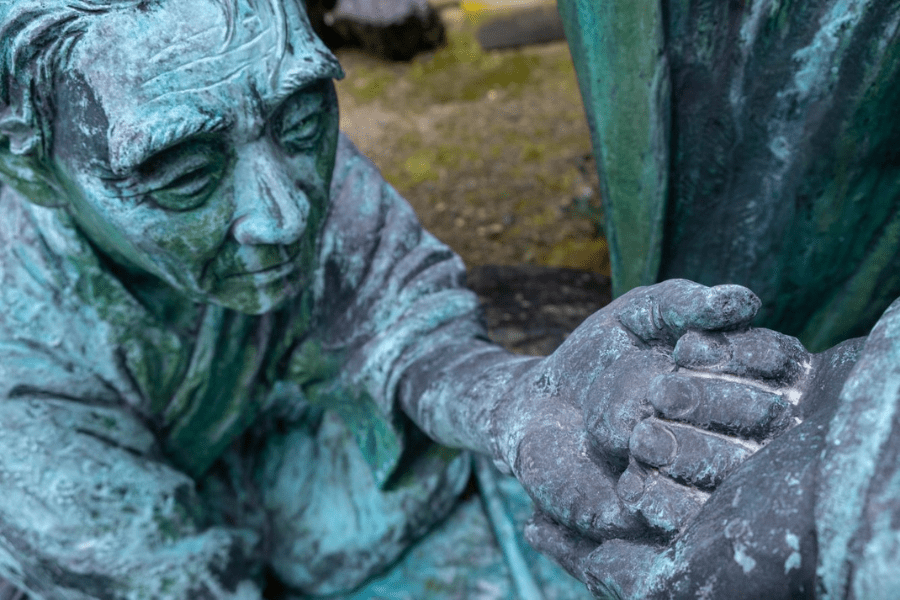
Hike the most strenuous pilgrimage trails to the best temples in Tokushima.
